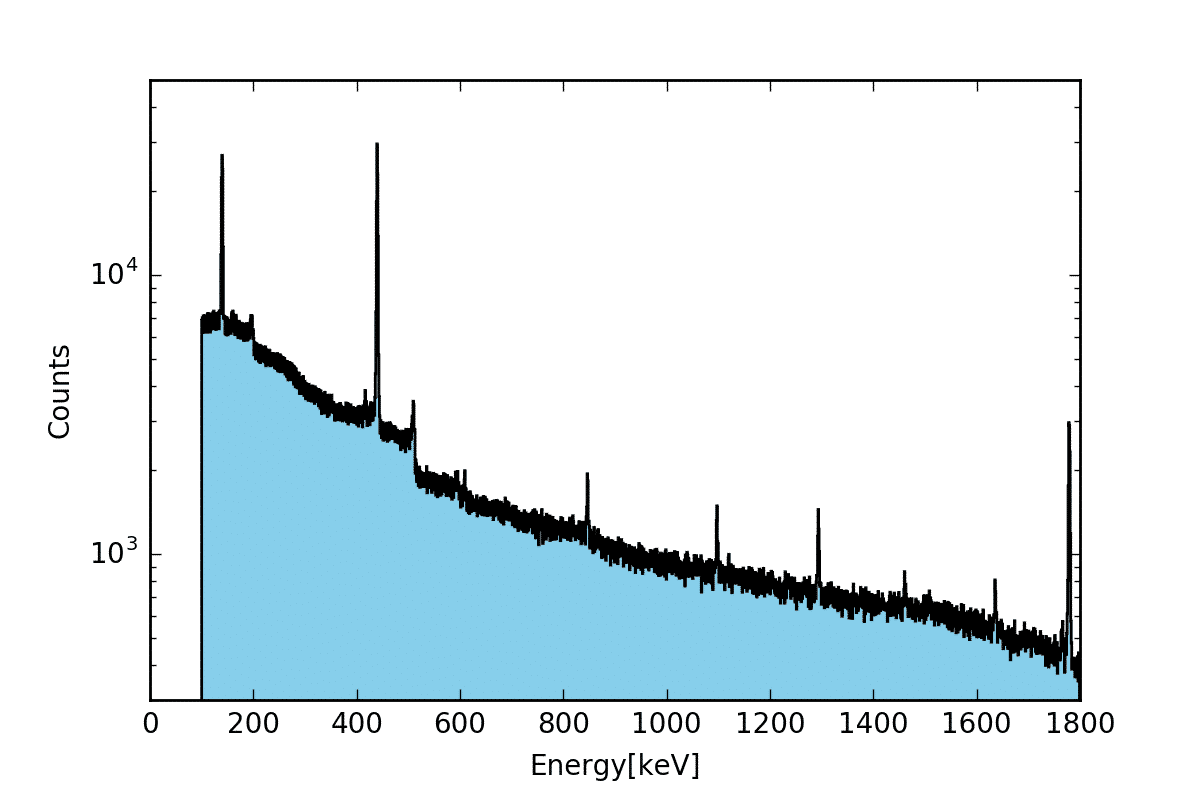
Branching Ratio Measurement in 23Ne Beta Decay
2Soreq Nuclear Research Center
Introduction
The Standard Model(SM) of particle physics is the remarkably successful theory in explaining various phenomena and is extensively tested by many experiments throughout years. By doing the precise measurements on the beta decay of trapped and cooled radioisotopes one can study the weak interaction of SM and thereby search for the new physics beyond standard model [1]. While investigating beta decay for weak interaction, one of the observable to look for is beta-neutrino angular correlation coefficient(αβν), which is sensitive to the new scalar or tensor currents. In our lab at SARAF, we are moving towards the trapping of 23Ne isotope and precise measurement(sub-percent) of αβν coefficient [2].
The experimental measurement of correlation coefficient αβν is done by studying the recoil ion spectrum of the radioisotope, in which principal contribution to the recoil energy spectrum of ion comes from the transition of the radioisotope to the ground state. Now 23Ne decays to 23 23Na by beta emission with Q-value of 4.376. The transition to the ground, second and third excited states are pure Gamov Teller(GT), while to the first excited state it is almost GT (Fermi fraction is <0.1%). Due to these various decay channels of 23Ne, an accurate measurement of branching ratio is very crucial for more precise determination of αβν.
Methods
Production of 23Ne at SARAF Accelerator:
For the production of 23Ne, deuterons of up to 10 uA are accelerated to 5 MeV and made to hit on LiF target which produced neutrons through a Li(d,n) process, the neutrons thus produced hit 1.4 kg of finely ground NaCl target that is heated to 573K, producing 23Ne atoms via 23Na(n,p)23Ne process. The 23Ne atoms diffused out the NaCl crystals, effuse out of the target and travel to a measurement cell, through a 10 m length 3" diameter hose. The measurement cell is located in the accelerator service corridor.
Measurement of Branching Ratio:
The decay products of the 23Ne atoms that decayed in the measurement cell were measured by an HPGe and two plastic scintillators. The plastic scintillators, thin and thick makes a dE/E telescope to identify electrons which were then made to use triple co-incidence with HPGe detector to screen gammas emitted after the beta decay.
Results
The experimental run with the above method was performed in March 2017 and we had obtained the following gamma spectrum: From gamma-ray intensities, 3.1(1) % of 440keV gammas come from decays to higher lying states [3]. This experiment was only partly successful as although we saw the production of 23Ne, we could not see the triple co-incidence events and could not measure the branching ratio. The same experiment with enhancements in the detection system is planned during the end of March 2018, results of which will be presented at the conference.

Bibliography
[1] J A Behr and G Gwinner. Standard model tests with trapped radioactive atoms. Journal of Physics G: Nuclear and Particle Physics, 36(3):033101, 2009.
[2] I Mordor et. Al, The Soreq Applied Research Accelerator Facility (SARAF) - Overview, Research Programs and Future Plans. arxiv:1801.06493, 2018.
[3] David E. Alburger. Decays of 21 Na, 23 Ne, 23 Mg, 24 Ne, and 31 S. Phys. Rev. C, 9:991–995, Mar 1974.

Powered by Eventact EMS